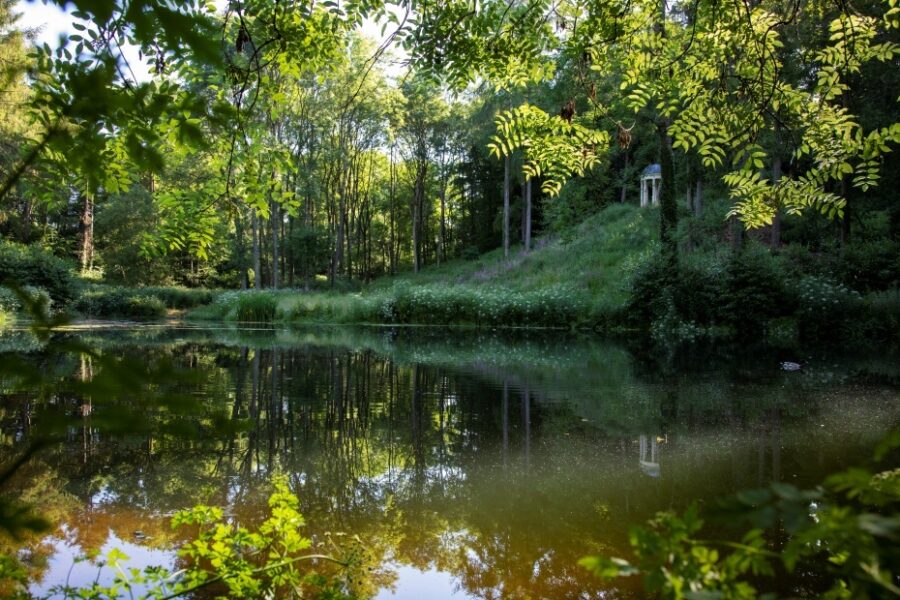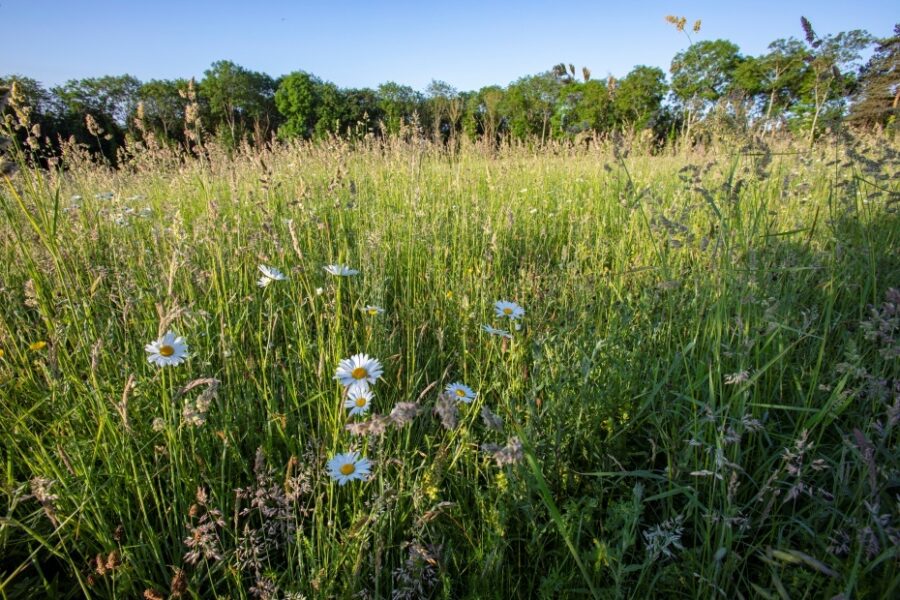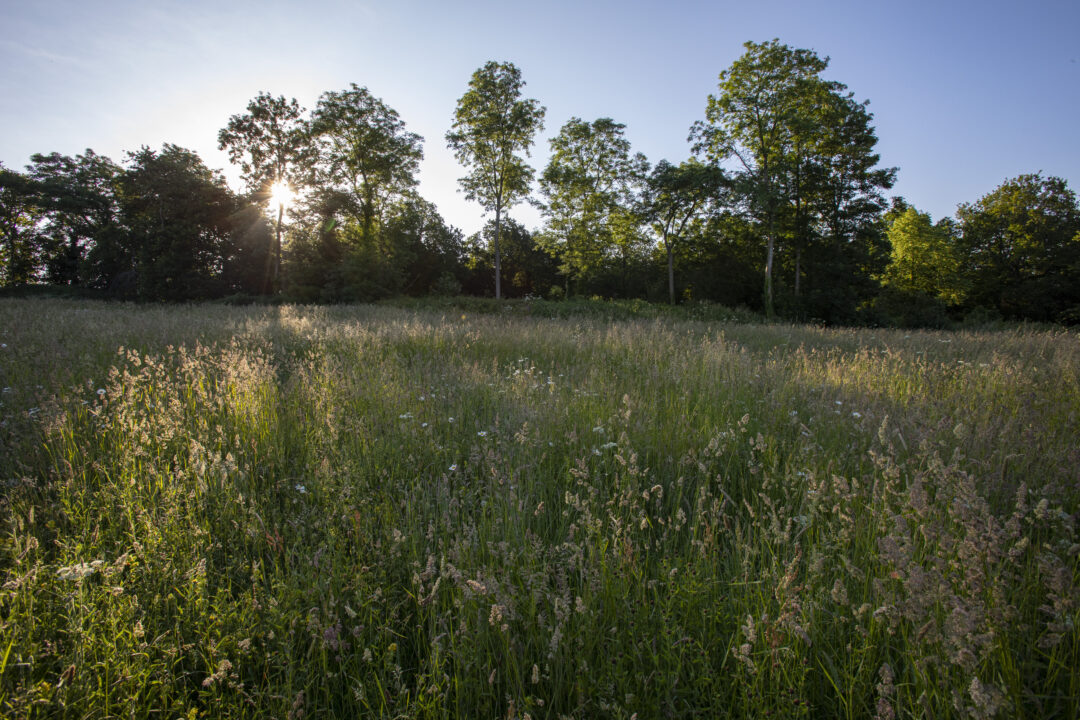
Starting this week, and throughout February, our skilled gardening team will be carrying out crucial tree preservation work across the estate, in order to deal with the trees that have sadly succumbed to ash dieback.
This means that for some of February certain parts of the gardens and car park areas will be closed off to the public. We will keep you informed of any changes on our website, across social media and with signage here on site to keep you safe.
At Hestercombe, we constantly monitor all of the trees on site. We have a Forestry Commission approved Woodland Management Plan that we follow, plus an independent safety survey which is carried out annually to assess all of the trees in public areas. It is a terrible sadness to have to cut a tree down, and so we do everything we can to avoid this situation by continuously monitoring our landscapes. Sometimes that can mean that we simply reduce the crown to make a tree more stable, or that we remove ivy from the trunk to stop it reaching the canopy where it can act like a sail on a windy day and topple the tree, or just the removal of a dead branch. Unfortunately, the effects of ash dieback mean that there are trees that we cannot save and need to fell in order to keep the public safe.

So what is ash dieback?
Ash dieback is a fungus that affects the tree's growth. It is thought to have been introduced to Europe from Asia around 30 years ago. Chinese ash, and other ash species native to Asia, seem to be unaffected, as they have had time to develop a defence. It is possible that over time our native ash tree (Fraxinus excelsior) might develop a way of regenerating too. However, currently it is estimated that Ash dieback will kill about 80% of ash trees in the UK.
Ash dieback affects all ages of trees but seems particularly vigorous on young ones. It is thought to have been brought to the UK originally on young imported sapling plants.
The fungus is spread by spores that are dispersed on the wind, which means they can travel several miles. The fungus grows inside the tree blocking its water system, causing dieback and eventually death to the tree. Signs that a tree has ash dieback are that the leaves will blacken and wilt, and shoots will die back. Sometimes it causes diamond shaped lesions on the bark. Where the lesions have stopped water and nutrients making their way along the branch, the stem can start to crack and dry out - this can easily lead to limb drop and make it dangerous for passing visitors. Ash dieback is capable of killing trees in its own right but also many of the weakened trees will succumb to secondary problems, such as honey fungus, which will kill them off. Fruiting spores are produced from June to October making the winter months are a safer time to deal with the trees. It is also important that we deal with trees prior to the birds nesting season from March to July. As a visitor attraction it is best for us to do the work outside of the busier seasons.
Ash is a very important tree in the British landscape. It has an airy canopy which means that light will still reach the woodland floor. This enables other plants to flourish under the tree, which creates feeding grounds and habitat for other species. Ash is a valuable woodland plant for wildlife. It’s estimated that over 1000 species have an association with ash trees for food or habitat; 44 of these were found only to occur on ash trees. Ash makes up 12% of our broadleaved woodlands in the UK but also occurs in parkland, on commons and in hedgerows. It has also been used for many years as a cash crop - it is a useful timber as it has strength, durability and is flexible so can be used for lots of things from tool handles, to flooring and joinery.
Most experts feel that it is too late to stop the spread of ash in the UK. Instead we hope that over time our native ash will develop a natural tolerance. Scientists are collecting genetic data from trees that show no sign of the disease and are looking at resilient trees for answers.
At Hestercombe our plan is to only take out dead and diseased trees that are close to paths, or where they could become dangerous to people. If there is an affected tree in the woods we will leave it to decay naturally and we will study those trees which show any resilience. However, it will have a big impact on the estate. This year we will be taking out 60 dead and diseased trees that we have been monitoring for the last few years. Currently we are monitoring another 100 trees that have begun to show the first signs of ash dieback and may need to be removed next year.
It’s not all doom and gloom, don’t forget that the gardens will have already gone through a similar process with Dutch elm disease. We have to see it as an opportunity to strengthen our wooded areas by adding biodiversity via our replanting. It’s a chance to widen the genetic palette and help to safeguard for the future. Over the next year we will be researching species of tree that would have been available to Bampfylde in the 1750’s so that we can keep the garden historically correct, but also look at planting trees that are resilient to future pest and disease problems, and to changes in climate.
For further information or to report a sighting visit the Forest Research website. If you think you have a resilient ash tree on your land please see The Living Ash Project.
Over the coming weeks, we'll be sharing lots more information on the work we're doing to protect and preserve the incredible trees in our gardens. Stay up-to-date by signing up to our newsletter and following us on social media.
